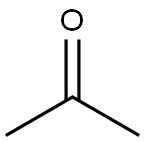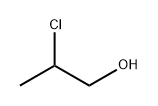
1-Chloro-2-propanol synthesis
- Product Name:1-Chloro-2-propanol
- CAS Number:127-00-4
- Molecular formula:C3H7ClO
- Molecular Weight:94.54

108-60-1
46 suppliers
$44.60/u

142-28-9
285 suppliers
$10.00/1g

123-72-8
422 suppliers
$12.32/25ML

67-64-1
6 suppliers
$17.30/10ml

127-00-4
136 suppliers
$25.19/25g
Yield:-
Reaction Conditions:
with hydrogen at 300;Temperature;Reagent/catalyst;
Steps:
1
General procedure: Perform catalyst testing in a glass-lined inch (6.35 millimeter (mm)) reactor placed in an oven. Use a Teledyne ISCO pump for liquid feed to the reactor and use mass flow controllers for hydrogen and nitrogen feeds. Use 0.2 grams (g) to 0.3 g of catalyst and hold the catalyst in place using quartz chips. Purge the reactor to remove oxygen, then reduce the catalyst under flowing hydrogen (10 standard cubic centimeters per minute (seem) flow rate) at 350 °C and atmospheric pressure for two hours (hr). Heat the reactor to a desired initial temperature that varies with the catalyst as shown in Table 1 below, pressure the reactor to 30 pounds per square inch (206.8 pascals (Pa)) and then start the liquid feed flow. Typical reaction conditions at such a pressure are temperatures of 100 °C, 150 °C, 200 °C, 250 °C and 300 °C with a feed of 10 seem of hydrogen and 0.45 millimeters per minute (ml/min) of a DCIPE feedstream (99.7 wt DCIPE and 0.3 wt 2,3-dichloro-2-propanol). Additional reaction condition sets include a hydrogen feed of 20 seem and a DCIPE flow rate of either 0.45 ml/min or 0.90 ml/min. See Table 1 below for catalyst test results in terms of liquid product composition in terms of propionaldehyde (PA), acetone (Ac), 1-chloropropane (1-CP), l-chloro-2-propanol (CPOH), 1,2- dichloropropane (DCP), and IPE using the temperature, flow and DCIPE flow also shown in Table 1. Catalyst (Cat) A (NobleMax 410, Clariant) ontains 3 wt% ruthenium, 92 wt active carbon in granule form and 5 wt water, all wt being based upon total catalyst weight (Clariant), in an amount of 0.153 g. Cat B (G-99 B-0, Clariant) contains 36.5 ± 1.0 wt copper, 32 ± 1.0wt% chromium, 2.3 ±0.3 wt manganese, 2.0 ±0.2 wt barium and has a surface area of 35.0 ±10.0 m2/g in an amount of 0.2993 g. Cat C (Cu0860, BASF) contains 50.0 wt% - 70.0 wt% copper oxide, 10.0 wt% - 30.0 wt% calcium oxide, 10.0 wt - 30.0 wt silica, 0.0 wt - 10.0 wt palygorskite (mg(Al0.5-iFe0- o.5)Si4(OH)010.4H20) and has a surface area of 60 m2/g and a density of 1.11 g/cm3 in an amount of 0.1897 g. Cat D (G-132A, Clariant) contains 30.0 ± 3.0 wt% copper oxide, 60.0 ± 3.0 wt zinc oxide and 8.0 ± 1.0 wt alumina in an amount of 0.2211 g. Table 1 The data in Table 1 show that l-chloro-2-propanol and 1 ,2-dichloropropane are the principal products obtained during hydrogenation using the catalysts and conditions shown in and preceding Table 1.
References:
DOW GLOBAL TECHNOLOGIES LLC;FERRARI, Daniela;STEARS, Brien A.;LIU, Yu WO2016/44009, 2016, A1 Location in patent:Page/Page column 5

106-89-8
752 suppliers
$9.00/10 g

127-00-4
136 suppliers
$25.19/25g

540-54-5
215 suppliers
$18.00/25mL

127-00-4
136 suppliers
$25.19/25g

627-30-5
318 suppliers
$9.00/1g

78-95-5
4 suppliers
$16.30/5 g

127-00-4
136 suppliers
$25.19/25g

